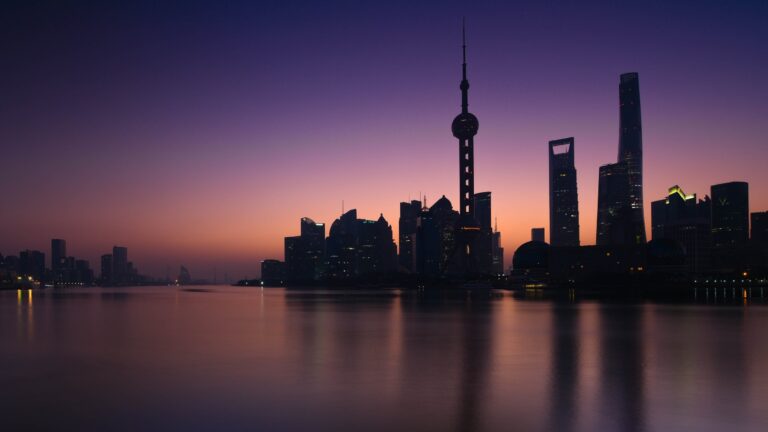
Editor’s note: Pastor Gao Zhen serves the house church in Beijing. He and many other pastors are thinking critically and writing about issues related to the spread of Christianity in China. In this post, Pastor Gao reflects on the Christian faith among overseas Chinese, the diversity of overseas Chinese, and his hope for increased connection between overseas and mainland Chinese believers.
The first wave of Chinese immigrants to the U.S. was mostly from Hong Kong, the second was from Taiwan, and the current wave of Chinese immigrants is from mainland China. There are a lot of immigrants and exchange students coming to the U.S. The Chinese church in the U.S. basically has three languages: Cantonese, English, and Mandarin. So although it might be a Chinese church, it’s actually a multicultural church.
These days, there are fewer and fewer people coming to the American Chinese church from Hong Kong and Taiwan. Most newcomers are from mainland China. When a mainland person comes to the U.S., they might visit the church. The churches visit different schools and look for Chinese students. They will be very aggressive in their evangelism, bring the students to the church, and the churches will actually assist these students in their day-day-day lives. But today it is different than it was ten years ago. A decade or so ago, most Chinese students were poor. All you had to say was: “We have free lunch!” The students would come.
But many of today’s Chinese students are fu er dai [“rich second generation,” used to refer to the children of China’s nouveau riche]. These students come to the States and buy a car, no problem. The church can help them get their driver’s license. But after they get the church’s help with their license, the students never return. It is like they have been vaccinated against the church.
There are a lot of visiting scholars in the U.S. as well. They usually come to the States for a year. They are sent by the government, and often lack the language skills necessary to communicate freely with their U.S. professors. The reason they come is to broaden their horizons. After a year, the visiting scholars are required to return to China.
Now, many of these visiting professors do want to attend church. Cults such as Jehovah’s Witnesses take advantage of this. The Witnesses will teach them English, and use English classes to do Bible studies with them. When our [orthodox] churches are not fervent in this type of outreach, visiting Chinese are more attracted to the heretical ministries, because these groups are more aggressive. If the scholars spend all their time for a year with Jehovah’s Witnesses, when they return to China, they are already entrenched in the cult. It is hard to change their mind again.
According to my observation, Chinese churches in the U.S. are living in a grand mix of cultures. Chinese culture is actually a subset of the big cultural diversity in America, and Chinese culture is subordinate to the main U.S. culture. The Chinese people try to learn American culture, but it is difficult; yet they are not truly Chinese anymore because they have been in the U.S. so long.
I will give an example to illustrate. When we pray in China, the more we pray, the more we feel energized. Why? Because every time you say a sentence, everyone responds “Amen!” very loudly. In the U.S. churches, you are more “civilized” in your prayers: “…Thanks to the Lord… our Father in heaven…” These are very low-tone prayers from beginning to the end! Nobody says amen except at the very end when they hear the phrase, “In the name of Jesus we pray.” I have noticed that even then, not everyone says amen! Now in the Chinese churches, we respond very loudly. But Chinese churches in the U.S. are also very quiet! They learned this from Americans, not from Chinese in China.
Pastors from mainland China find it hard to shepherd Chinese churches in the U.S., because these churches require you to know Mandarin, Cantonese, and English. If you are a pastor from the mainland, you are good in Mandarin, you might be okay in English, but you definitely do not know Cantonese. So you cannot truly shepherd those that only speak Cantonese. Now there are more mainlanders, so we need more pastors from China. But if you are a pastor who was raised in America, you do not truly understand the Chinese church. I would say Chinese churches in the U.S. actually find it hard to serve the churches in China, and the churches in mainland China find it hard to influence Chinese churches in the U.S. Even though we are all called the Chinese church, we have major differences.
A lot of people come to faith here in the U.S., and they answer God’s call to be full-time gospel workers. But do you know the problem with returning to China? In China, they ask pastors to be poor, to be always busy, and to be willing to die at any time. So when these pastors see life in the U.S., they think, “Wow! Now I can have a good life!” Pastors in America are not called to be totally spiritual. They become secularized.
In the next decade, I encourage those pastors who came to faith in the U.S. to go back to China. Maybe they could go to China and do a one-year internship at a house church in China before they return to lead churches in the States. I believe this would be a great blessing for the church.































